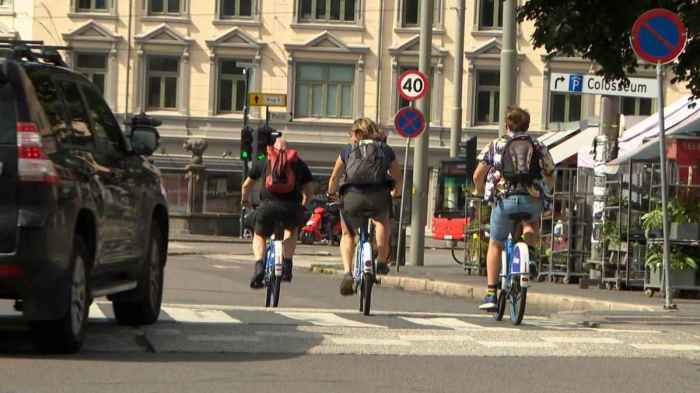Bicyclists often create unsafe situations by riding, a concerning issue that disrupts traffic flow, endangers safety, and highlights the need for infrastructure improvements and educational initiatives. This article delves into the various riding behaviors, traffic impacts, safety risks, and infrastructure considerations that contribute to this problem, proposing solutions to enhance safety for both cyclists and other road users.
Bicyclist Behavior Patterns
Cyclists’ riding behaviors significantly contribute to unsafe situations on the road. These behaviors include:
- Riding in the wrong direction:Cyclists who ride against traffic flow create a hazard for themselves and other road users.
- Failing to yield:Cyclists who fail to yield to pedestrians or vehicles have a higher risk of being involved in accidents.
- Weaving in and out of traffic:Cyclists who weave in and out of traffic can easily cause collisions with other vehicles.
- Running red lights:Cyclists who run red lights pose a significant danger to themselves and others.
- Riding on the sidewalk:Cyclists who ride on the sidewalk can create hazards for pedestrians.
Impact on Traffic Flow
Cyclists can disrupt the smooth flow of traffic in several ways:
- Slowing down traffic:Cyclists who ride slowly can cause traffic congestion, especially in urban areas.
- Blocking traffic:Cyclists who ride in groups or in large numbers can block traffic, causing delays.
- Creating blind spots:Cyclists who ride in blind spots can create a hazard for drivers.
Safety Concerns

Unsafe cycling practices increase the risk of accidents and injuries:
- Collisions with vehicles:Cyclists who ride in the wrong direction or fail to yield have a higher risk of being involved in collisions with vehicles.
- Falls:Cyclists who ride on the sidewalk or weave in and out of traffic have a higher risk of falling.
- Injuries to pedestrians:Cyclists who ride on the sidewalk can cause injuries to pedestrians.
Infrastructure Considerations

Inadequate infrastructure can contribute to unsafe cycling situations:
- Lack of bike lanes:The absence of bike lanes forces cyclists to ride in the road, increasing their risk of being involved in accidents.
- Poor road conditions:Cyclists who ride on roads with potholes or other hazards have a higher risk of falling.
- Lack of signage:Cyclists who ride on roads without proper signage may not be aware of potential hazards.
Educational and Enforcement Measures: Bicyclists Often Create Unsafe Situations By Riding

Educational initiatives can promote safe cycling practices among cyclists:
- Cycling safety courses:These courses can teach cyclists about safe riding practices.
- Public awareness campaigns:These campaigns can raise awareness of the dangers of unsafe cycling practices.
- Enforcement measures:Police can issue tickets to cyclists who engage in unsafe riding practices.
FAQ Guide
Why do cyclists engage in unsafe riding practices?
Factors contributing to unsafe cycling behaviors include a lack of awareness about traffic laws, inadequate cycling infrastructure, and a desire to assert their presence on the road.
How do cyclists disrupt the smooth flow of traffic?
Cyclists can impede traffic flow by riding unpredictably, failing to yield to vehicles, and blocking intersections.
What are the potential consequences of unsafe cycling practices?
Unsafe cycling behaviors increase the risk of accidents, injuries, and fatalities for both cyclists and other road users.